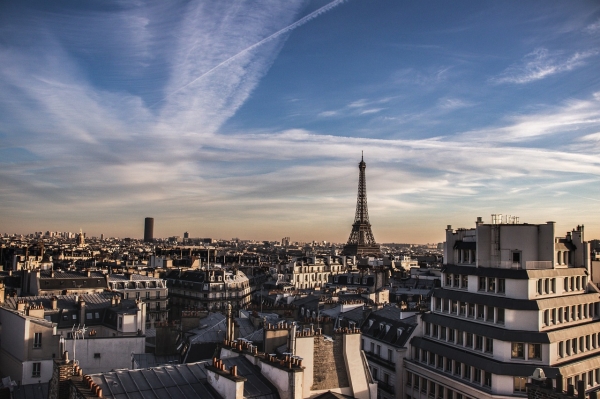With its zinc roofs and minimal tree cover, Paris was not built to handle the new era of extreme heat.
With its zinc roofs and minimal tree cover, Paris was not built to handle the new era of extreme heat. Now, like other cities worldwide, it is looking at ways to adapt to rising temperatures — planting rooftop terraces, rethinking its pavements, and greening its boulevards.
There’s a long tradition in France of taking August off for holiday. Paris virtually shuts down as the temperature drifts around in the seventies, and people go to the beach or the mountains to cool off and relax. Think of it as an old‑fashioned adaptation to heat. People who stick around during August are often older or have jobs that require them to stay and keep the city functioning.
In the summer of 2003, Parisians who remained in the city were hit with something they were not accustomed to: a heat wave. For nine days in August, the daytime temperature was above 95 degrees Fahrenheit, sometimes spiking up to 104 degrees. It didn’t cool off much at night either. It took a few days for the full scope of the tragedy to reveal itself. Hospital emergency rooms started to fill up. A week or so into the heat wave, city officials began running out of places to store bodies.
In less than two weeks, 15,000 people in France died as a direct result of the heat wave. Nearly a thousand lived in central Paris. Many of the victims lived alone, in top‑floor garrets or attic apartments, where the heat built up beneath zinc roofs and literally cooked people as if they were in an oven.
Read more at Yale Environment 360
Photo Credit: Sadnos via Pixabay






